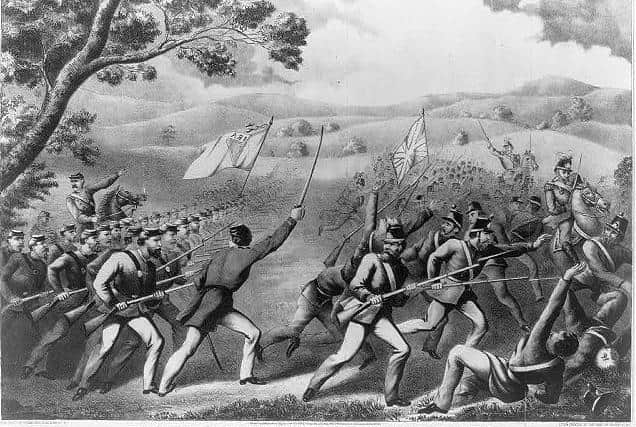THROUGH THE ARCHIVES: From the News Letter of February 1866
and live on Freeview channel 276
During this week in February inhabitants of Mullyloughran and the adjoining townlands in Co Armagh had been “considerably alarmed” by the announcement of the watchmen on patrol that at about, twelve o’clock that night that they had observed three lights, “which had all the appearance of being signals, on three different hills, a good distance from each other”.
The News Letter noted: “Of course, they have the alarm, and the fact was confirmed by the people themselves, who immediately turned out of their houses and saw the lights.
Advertisement
Hide AdAdvertisement
Hide Ad“It was generally expected there would be a ‘rising’ of the Fenians, and such is the terror of persons in rural districts that many of those who were thus disturbed did not retire for the rest of that night again.”


Fenianism at Cootehill, Co Cavan
Nearby in the town of Cootehill in Co Cavan, a painter named Duffy, had given information to the police that a bell-hanger named Ford from Drogheda, had wanted to swear Duffy in as a Fenian.
Ford was arrested, and, when in custody of the police, he said that he was Fenian, and “they might make the best of it”.
He was committed until the next Petty Sessions by William Murray, Esq, JP.
Advertisement
Hide AdAdvertisement
Hide AdThe News Letter’s correspondent noted: “This being the first case in this town [of Fenianism], it created a good deal of excitement.”
Fenianism sympathies in France
On Monday, February 12, 1866, the News Letter republished the following interesting letter which had been printed in The Times.
It had arrived with the London newspaper from Paris.
It read: “I yesterday travelled from Abbeville to Amiens with some French officers. One of the, a captain, told me that he was of Irish extraction, and bore an Irish name, but that his family had long been settled in France.
“In the same regiment were two other officers similarly circumstanced.
Advertisement
Hide AdAdvertisement
Hide Ad“Each of them had received a circular begging the aid of their purses and persons in the futherance of the Fenian cause, to wrest their native country (Ireland) from the English invader.”
The letter from Paris concluded: “He further informed me that he believed every officer in the French army with an Irish name had been applied to in a like manner.”
Comment Guidelines
National World encourages reader discussion on our stories. User feedback, insights and back-and-forth exchanges add a rich layer of context to reporting. Please review our Community Guidelines before commenting.